5 Steps for Choosing The Perfect Medical Claim Clearinghouse
Healthcare providers have a choice as to which clearinghouse they work with. And believe it or not, not all of them have the same hair-pulling experience that the majority of us have grown accustomed to. That’s why it’s so important to choose the right medical claim clearinghouse for your organization.

If you mentioned the word “clearinghouse” to a healthcare professional, you would get one of two reactions. The first, most common reaction you would receive is a sigh followed by an eye roll. The second and rarer reaction is a smile and verbal acclaim.
Here’s the reality.
Clearinghouses are a required piece to the modern healthcare puzzle. Without them healthcare would essentially grind to a screeching halt. In this dark, clearinghouse-less reality, providers would have to turn down insured patients who use insurances that only accept electronic claims.
Medical claim clearinghouses act as the connection point between providers and insurances. They confirm coverage and send reimbursement.
Prior to where we are today, where many practices are trying to push towards going paperless and electronic remittance advice exists, the insurance reimbursement process was a much more tedious process. It involved driving to and from the post office at a moment's notice to submit claims on time to not risk a timely filing limit denial.

Yet, even though clearinghouses are such an integral part of the modern medical landscape, there’s a reason why the most common reaction to them is negative.
They’re not easy to work with in most cases.
You see, the healthcare industry as a whole grew to a $4.1 trillion industry in 2020. That number is massive, but it might not be that surprising. Everyone on the planet is a “consumer” of healthcare services.
But that’s exactly the point I’m trying to make.
Since it’s such a gigantic industry, insurance payers and large medical claim clearinghouses put up guardrails to try make the management processes involved easier.
To make that last statement easy to understand, calling a large insurance provider or clearinghouse is a similar experience to calling your internet services provider.
The number you dial leads to a robotic filtering system that never understands your responses because it’s bad at listening. After you get through repeating yourself to the robotic system, you’re left waiting on hold for hours at a time because their “system is experiencing heavy traffic”. Yes, I’ve gone through this personally and am still bitter about it.
But it doesn’t have to be this way.
Healthcare providers have a choice as to which clearinghouse they work with. And believe it or not, not all of them have the same hair-pulling experience that the majority of us have grown accustomed to.
That’s why it’s so important to choose the right medical claim clearinghouse for your organization. Here's how to do it.
Step 1: Understand The Process
Before you start feverishly googling for the perfect medical clearinghouse partner, the first step you need to take is ensuring that you understand the claim submission process.
Although I think it’s safe for me to assume that by reading this blog post, you’re familiar with the claim submission process. It’s the most important piece to understand when trying to find the right clearinghouse. So, I can’t chance that.
However, I won’t bore you and go through the entire step-by-step process.
Instead, I want to harp on the fact that there is a lot of jargon and acronyms involved with this process.
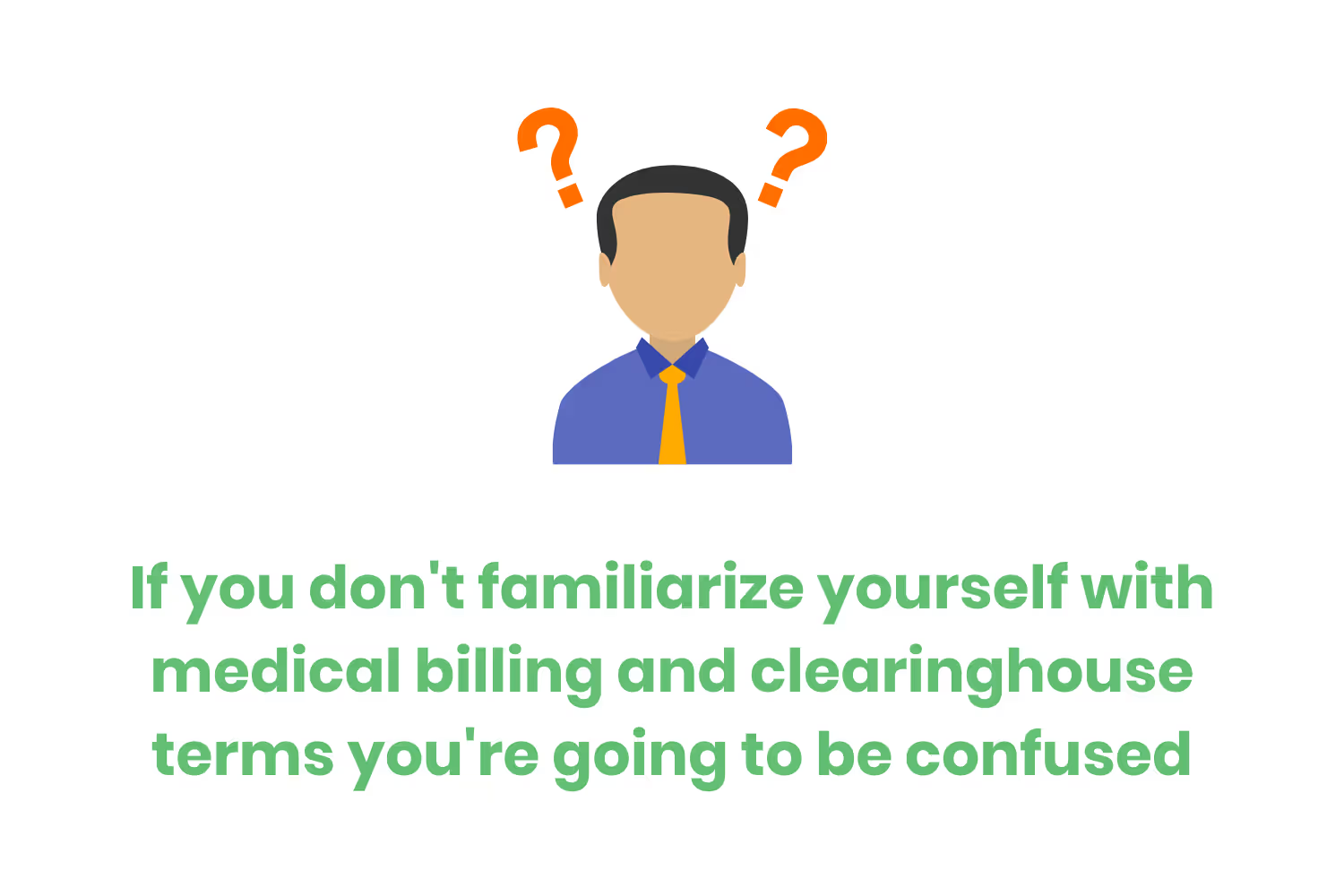
If you haven’t brushed up on the terms associated with sending claims to insurance providers, you’ll need to re-familiarize yourself with them. Specifically, refresh on terms like appeals, denials, electronic remittance advice (ERA), ANSI, Current Procedural Terminology (CPT), Explanation of Benefits (EOB), etc.
The reason why you’ll need to keep the meaning of these terms in your backpocket isn’t entirely because it’ll help your knowledge. You see, once you start evaluating partners, they’re going to bombard you with all of the terms I listed earlier as a part of their solution’s demonstration.
If you don’t understand all of the terms these clearinghouse sales representatives mention, you won’t get much value out of them. It’s hard to evaluate medical claim clearinghouses if you don’t understand the entire process and vernacular that’s used.
Step 2: Evaluate Your Specialty Needs
We’re still in the preliminary stages of choosing the perfect medical claim clearinghouse. At this step you haven’t reached out to anyone yet.
Not only are the terms associated with the medical claim submission process something that you need to brush up on beforehand, you also need to understand the needs of your specialty.
You see, things change a little bit based on your niche within healthcare.
For example, if you’re the owner of a mental health practice, you’re going to have to work with managed care organizations (MCOs). Similarly, if you’re a dentist the requirements placed on you by the payer are going to be different than what’s required for submissions from pediatricians.
Yes, there are still similarities…at the end of the day each of the healthcare organizations submitting claims are trying to get paid.
But, the small differences have the biggest impact.
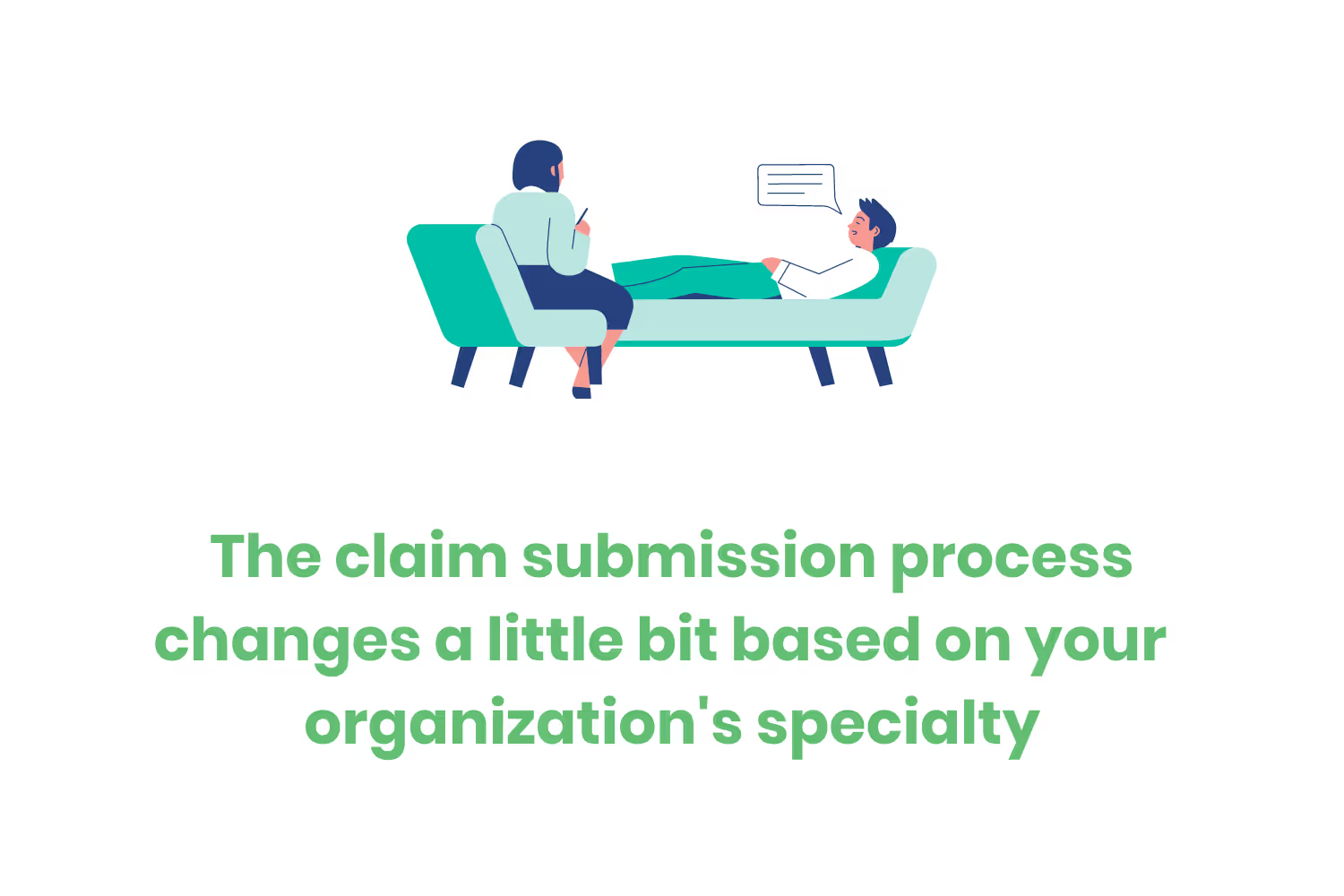
That’s why the second step in finding the perfect medical claim clearinghouse for your organization is still exploratory.
If you don’t know that key differences exist in the claim submission process for your specialty, you might end up with a generic clearinghouse partner.
Let me refer back to that mental health practice example from earlier. If your organization resided in Ohio, in this instance, you’ll want your clearinghouse partner to be an expert on the Ohio Medicaid redesign.
Step 3: Realize Your "Must Have" Features
Features are always one of the most important aspects of any tool evaluation, across the board. Rightfully so, you want the most “bang for your buck”.
There’s no shortage of features in what medical claim clearinghouses provide. In fact, some might even say that these tools have too many.
I know what you’re thinking, “I already have no time for administrative tasks and now you’re telling me that clearinghouses have too many features?”
Let me pile on a little bit. Over 50% of doctor’s say that they spend more than half of their day working in and managing their electronic health record (EHR) system.
So, is seeking a medical claim clearinghouse even worth it then? Yes. Its purpose is to help you collect on your revenue.
The point I’m trying to make is that finding the clearinghouse that has the most features and advertises the same doesn’t make it the best fit for your organization.
If you go that route, you might end up increasing your daily responsibilities…which in turn makes it harder for you to provide treatment for your patients.
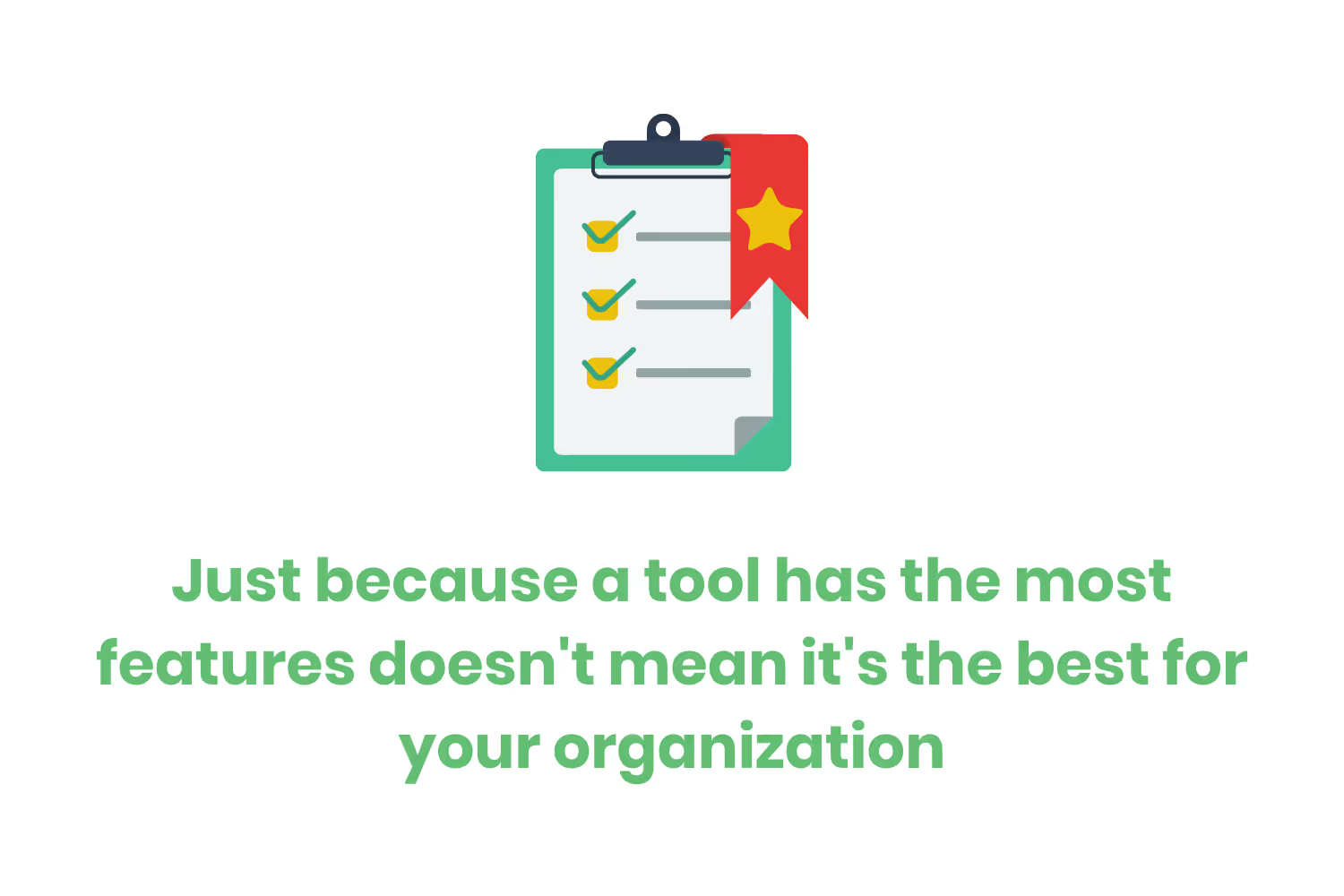
The best way to approach features is to research all of them and rank those that are the most important to your organization.
For example, even though the majority of payers moved toward electronic submission via ANSI, there are still a few that require paper. If the majority of the patients you see have insurance providers that are a part of the paper minority, you’ll want a medical claim clearinghouse that can automatically print and mail paper claims to those payers. In other words, that’s a feature you’ll want to harp on during your evaluations.
Step 4: Ask About Connections
The title of this section isn’t talking about the “connections” sales people brag about. It’s a reference to electronic connections that clearinghouses have to make in order to send claims and receive updates on the same.
During your evaluation, it’s likely that you’ll come across an organization that’s new to the medical claim clearinghouse market. They’ll probably even have some spiffy looking web pages that include modern design styles and buzzwords scattered throughout.
Don’t fall for the marketing ploy.
You see, medical claim clearinghouses are only as valuable as the amount of connections they have to payers.
Let’s say that you end up choosing the organization that had the spiffy website.
You integrated with them and it all went smoothly. Day one of the new system comes around and you try to submit a claim from a patient who uses Medical Mutual and it doesn’t go through.
To try to resolve this issue, you end up calling the “spiffy” clearinghouse. Once connected you explain to the representative on the other line the problem you’re running into. The representative responds saying that their clearinghouse doesn’t have a connection with Medical Mutual but their “working” on it.
By the time this organization makes a connection with Medical Mutual, the timely filing limit placed on the original claim came and went.
That scenario helps illustrate the importance of payer connections.
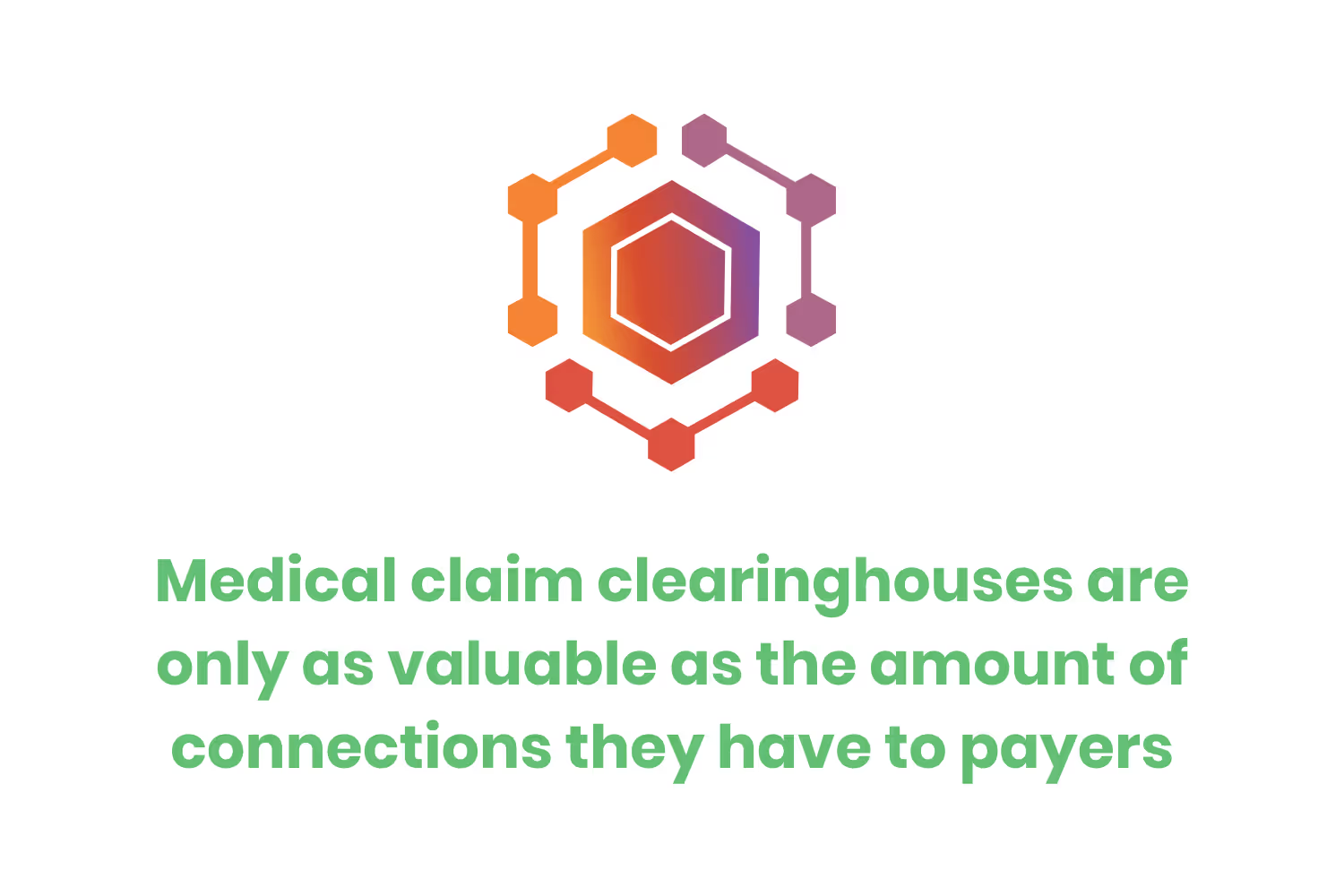
In other words, you need to ensure that you stay attuned to these discussions. Just because one clearinghouse provider has a nicer online image doesn’t mean they have the payer connections necessary for your organization to collect its revenue.
Usually, the best clearinghouse options come from organizations that’ve been around for decades.
Step 5: Emphasize Customer Service
Do you remember at the very beginning of the blog post when I mentioned the scenario that we’ve all run into before? The one that involved calling insurance providers?
Well, I mentioned what I’m about to go over during that part briefly but it deserves its own section.
In the medical claim clearinghouse world, there are a few massive organizations. They make hundreds of millions of dollars in revenue every quarter, have every feature you could dream of and throw in buzzwords like “AI” throughout their websites.
What they DON’T tell you is that they can’t keep up with their customer service requests and the experience they provide is similar to what’s offered by payers.
If you end up choosing one of these massive clearinghouse organizations and you run into an inevitable issue with one of your claims, you can expect a headache while trying to solve it.
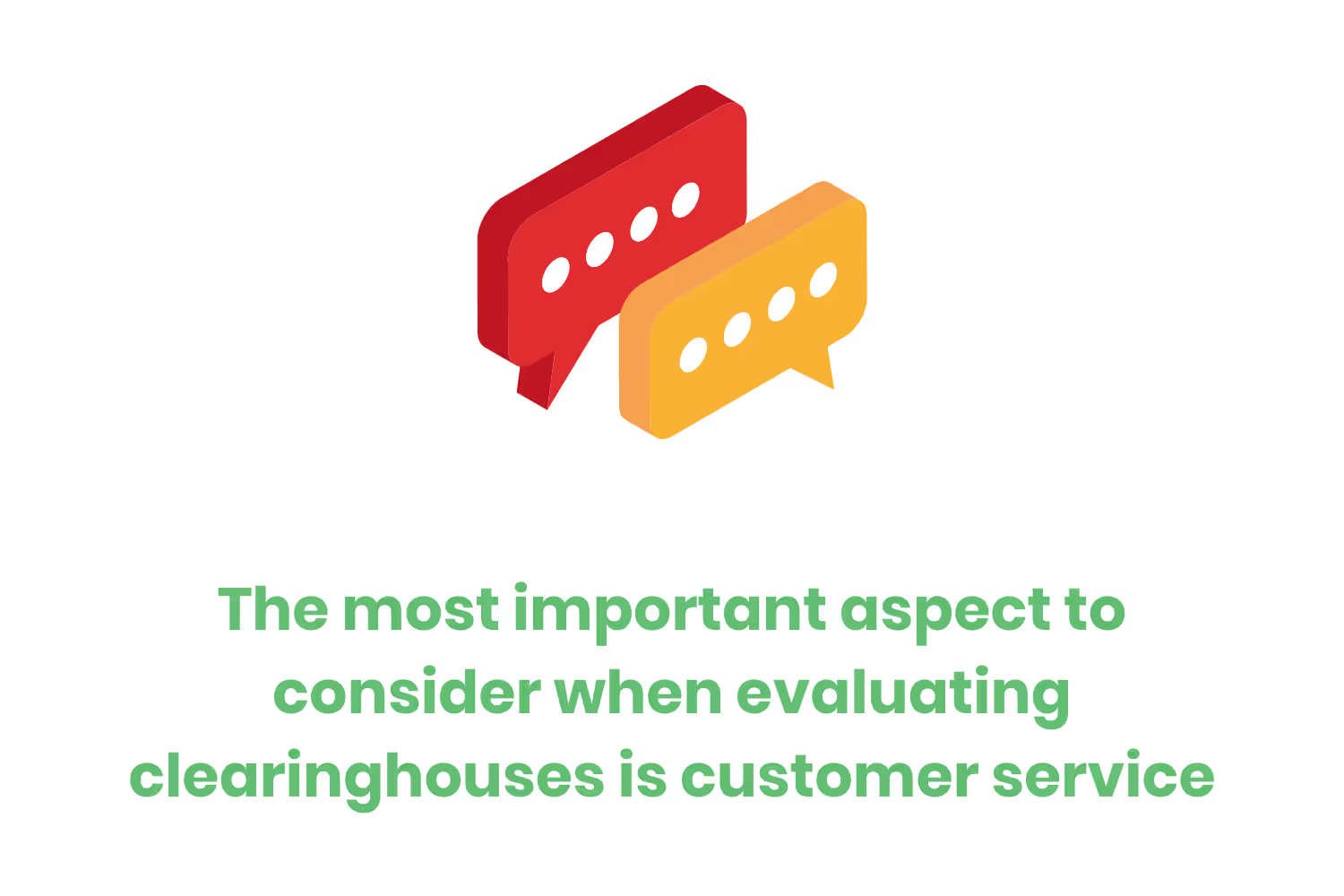
Out of everything I’ve told you to keep in mind so far during your evaluation, the most important aspect to consider is customer service.
Based on the statistics and trends associated with claim denials, it’s not really a matter of if you’re going to have a problem with your claims…it’s a matter of when.
When those problems arise, you’re going to want to have an expert on-hand to reach out to. That’s not to say that you don’t know what you’re doing. It’s to point out that the clearinghouses who have great customer service (like ours) have entire teams whose sole responsibility is to fix your claim disputes for you.
Conclusion
Although the five steps I detailed in the blog post will help you choose the perfect medical claim clearinghouse for your organization, the process isn’t easy.
You see, finding the right organization to streamline your claim submission will take a lot of evaluation, integration and patience. But it will all be worth it.
If you choose the perfect clearinghouse for your organization, you’ll immediately see an increase in your revenue and won’t have to worry about switching any time soon.
Emphasize your product's unique features or benefits to differentiate it from competitors
In nec dictum adipiscing pharetra enim etiam scelerisque dolor purus ipsum egestas cursus vulputate arcu egestas ut eu sed mollis consectetur mattis pharetra curabitur et maecenas in mattis fames consectetur ipsum quis risus mauris aliquam ornare nisl purus at ipsum nulla accumsan consectetur vestibulum suspendisse aliquam condimentum scelerisque lacinia pellentesque vestibulum condimentum turpis ligula pharetra dictum sapien facilisis sapien at sagittis et cursus congue.
- Pharetra curabitur et maecenas in mattis fames consectetur ipsum quis risus.
- Justo urna nisi auctor consequat consectetur dolor lectus blandit.
- Eget egestas volutpat lacinia vestibulum vitae mattis hendrerit.
- Ornare elit odio tellus orci bibendum dictum id sem congue enim amet diam.
Incorporate statistics or specific numbers to highlight the effectiveness or popularity of your offering
Convallis pellentesque ullamcorper sapien sed tristique fermentum proin amet quam tincidunt feugiat vitae neque quisque odio ut pellentesque ac mauris eget lectus. Pretium arcu turpis lacus sapien sit at eu sapien duis magna nunc nibh nam non ut nibh ultrices ultrices elementum egestas enim nisl sed cursus pellentesque sit dignissim enim euismod sit et convallis sed pelis viverra quam at nisl sit pharetra enim nisl nec vestibulum posuere in volutpat sed blandit neque risus.

Use time-sensitive language to encourage immediate action, such as "Limited Time Offer
Feugiat vitae neque quisque odio ut pellentesque ac mauris eget lectus. Pretium arcu turpis lacus sapien sit at eu sapien duis magna nunc nibh nam non ut nibh ultrices ultrices elementum egestas enim nisl sed cursus pellentesque sit dignissim enim euismod sit et convallis sed pelis viverra quam at nisl sit pharetra enim nisl nec vestibulum posuere in volutpat sed blandit neque risus.
- Pharetra curabitur et maecenas in mattis fames consectetur ipsum quis risus.
- Justo urna nisi auctor consequat consectetur dolor lectus blandit.
- Eget egestas volutpat lacinia vestibulum vitae mattis hendrerit.
- Ornare elit odio tellus orci bibendum dictum id sem congue enim amet diam.
Address customer pain points directly by showing how your product solves their problems
Feugiat vitae neque quisque odio ut pellentesque ac mauris eget lectus. Pretium arcu turpis lacus sapien sit at eu sapien duis magna nunc nibh nam non ut nibh ultrices ultrices elementum egestas enim nisl sed cursus pellentesque sit dignissim enim euismod sit et convallis sed pelis viverra quam at nisl sit pharetra enim nisl nec vestibulum posuere in volutpat sed blandit neque risus.
Vel etiam vel amet aenean eget in habitasse nunc duis tellus sem turpis risus aliquam ac volutpat tellus eu faucibus ullamcorper.
Tailor titles to your ideal customer segment using phrases like "Designed for Busy Professionals
Sed pretium id nibh id sit felis vitae volutpat volutpat adipiscing at sodales neque lectus mi phasellus commodo at elit suspendisse ornare faucibus lectus purus viverra in nec aliquet commodo et sed sed nisi tempor mi pellentesque arcu viverra pretium duis enim vulputate dignissim etiam ultrices vitae neque urna proin nibh diam turpis augue lacus.




